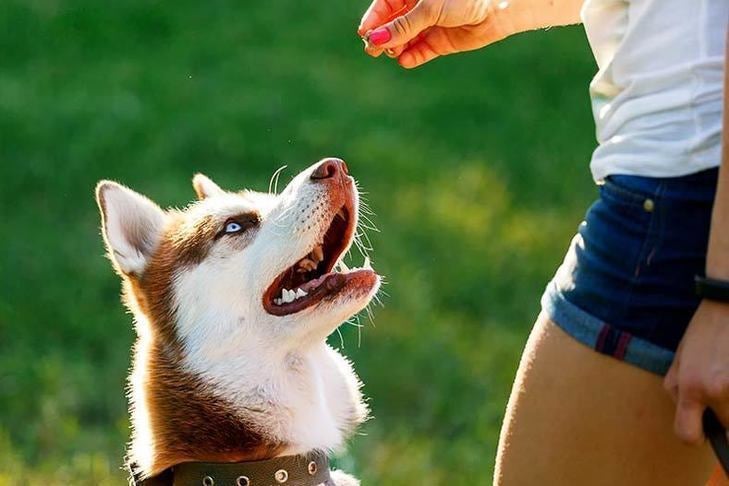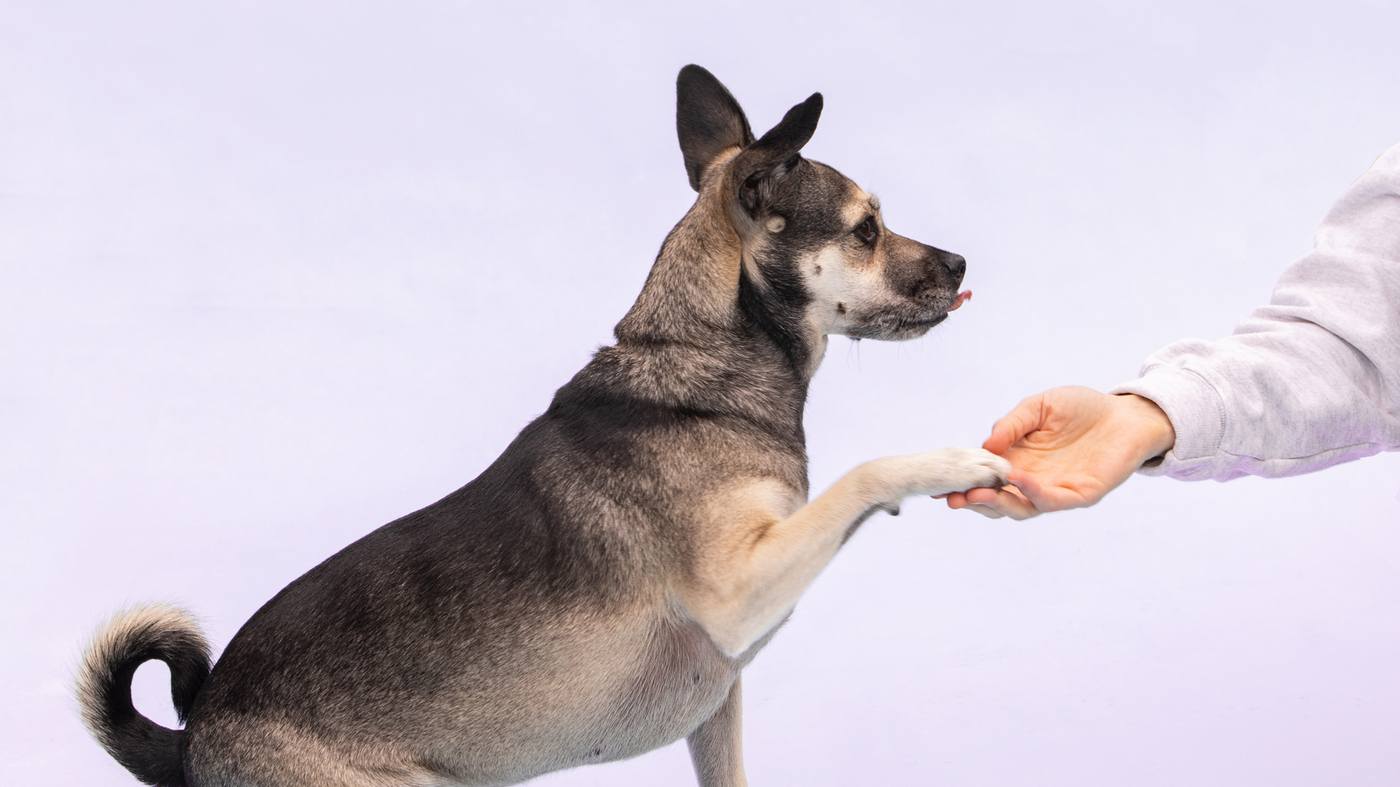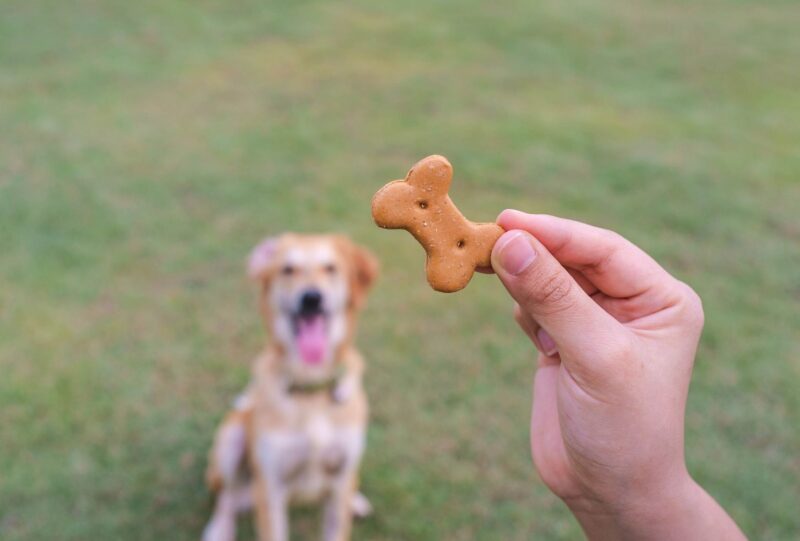Training a dog can be a challenging task, but with the right approach, it can also be rewarding for both the pet and the owner. Positive reinforcement is an effective way to help dogs learn new behaviors and become well-behaved companions.
In this article, we will explore how positive reinforcement works and provide tips on how you can use treats and praise to effectively train your pup. From understanding the basics of behavior modification to creating meaningful rewards that engage your four-legged friend, you’ll discover strategies that are sure to result in success. So grab some treats, and get ready to reward good behavior – it’s time to learn the science of positive reinforcement!
The Basics of Positive Reinforcement: What is it and How Can You Use It?
Positive reinforcement is a powerful tool that can be used to train dogs. It involves providing rewards or incentives for desired behaviors, such as treats and verbal praise. This type of training can help you effectively and positively modify your pet’s behavior while avoiding punishment that could hurt their well-being. Using positive reinforcement to train your dog is not difficult but there are certain things you need to consider before starting the process.
Firstly, it’s important to identify what motivates your pup – this could range from food rewards like treats and kibble, toys, or even verbal praise such as ‘Good boy!’ Once you understand what motivates them then it will be easier to begin using positive reinforcement techniques. When applying this method of training it’s essential to pay attention to timing; reward the desired behavior quickly so your pet understands why they are receiving the reward. Of course, consistency is also key – if you want your dog to repeat the same behavior then ensure that every time they do so they receive a treat or verbal praise for doing so correctly.
Lastly, always make sure that any rewards given during training sessions are appropriate for specific behaviors only – don’t give out too many treats at once otherwise this might diminish their value in future sessions! Another thing that can help is using tools such as a dog water bottle during training sessions to make sure your pup stays hydrated and focused. Overall, understanding how best to use positive reinforcement when teaching your dog new commands will take some practice but with patience and perseverance both you and the pup should see results soon enough!
Understanding the Benefits of Using Treats and Praise to Train Your Dog

Positive reinforcement is a powerful tool when it comes to training your pup. By understanding the benefits of using treats and praise as rewards for desired behavior, you can make sure that your furry friend learns quickly and effectively. Treats are an excellent way to reward dogs for learning new behaviors or following commands. Not only do they provide physical nourishment, but they also help create a positive association between particular actions and something the dog enjoys – namely, food!
Additionally, treats are often easy to carry around with you while out on walks or trips to the park so that you can continue reinforcing good behavior even when outside of the house. Praise is another great tool for motivating your pup’s training progress. Verbal affirmations such as Good boy/girl! have been proven to be highly effective in creating positive associations between desirable actions and being rewarded with love from their owners; this helps keep dogs focused on what they’re doing right rather than getting frustrated by mistakes they might make along the way.
It’s important not just to use words though; many pet experts recommend accompanying verbal praise with physical affection like patting or scratching behind their ears to further reinforce good behavior habits among our four-legged friends! Overall, combining both treats and praise into a training regimen can be incredibly beneficial for teaching puppies how we want them to behave – making sure that everyone involved gets maximum enjoyment from spending time together!
Developing a Training Routine with Positive Reinforcement
Positive reinforcement is a scientifically proven and effective way to train dogs. Treats, praise, and other forms of reward are key components in developing an effective training routine for your pup. To begin the process, it’s important to understand that positive reinforcement should be used consistently throughout the training program. Setting up a schedule with rewards after each successful accomplishment will help ensure that your pup can recognize its progress as they learn how to follow commands or complete tasks like walking on a leash.
Additionally, you must remain consistent when giving out treats or other forms of reward; this will allow your dog to establish clear expectations so they can continue progressing through their training goals. Furthermore, you must also make sure that the level of difficulty increases gradually over time as well as provide plenty of positive feedback for every success; praising your pup when they demonstrate good behavior will reinforce those behaviors and encourage them to keep trying new things even if they do not get immediate results.
Finally, always remember that consistency is key – rewarding successes regularly and providing plenty of encouragement along the way will help create a successful training routine with positive reinforcement for both you and your furry friend!
Troubleshooting Common Issues When Training With Positive Reinforcement

When it comes to training your dog with positive reinforcement, there are several common issues that you may face along the way. One issue is that some dogs just don’t respond well to rewards like treats and praise because they’re not getting enough attention or stimulation when trained this way. Another problem can be that owners tend to give too much reward which can lead to over-rewarding behavior and subsequently undesirable behaviors in their pets.
Additionally, if a pet doesn’t have any prior experience with positive reinforcement methods, then those same techniques will likely fail as the animal won’t understand what’s going on. Finally, it’s also possible for an owner to unintentionally reinforce negative behavior due to timing or environmental factors. To avoid these issues, owners should make sure they provide consistent rewards and stay mindful of how their actions affect their pet’s reactions during each training session.


